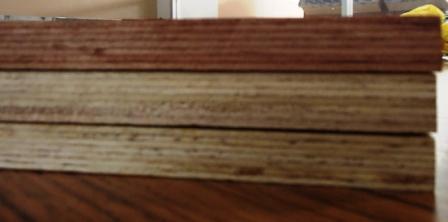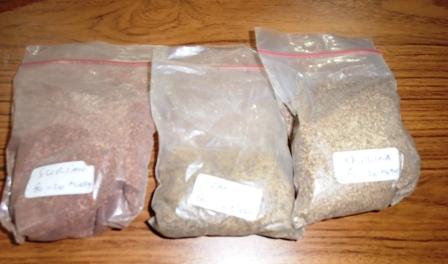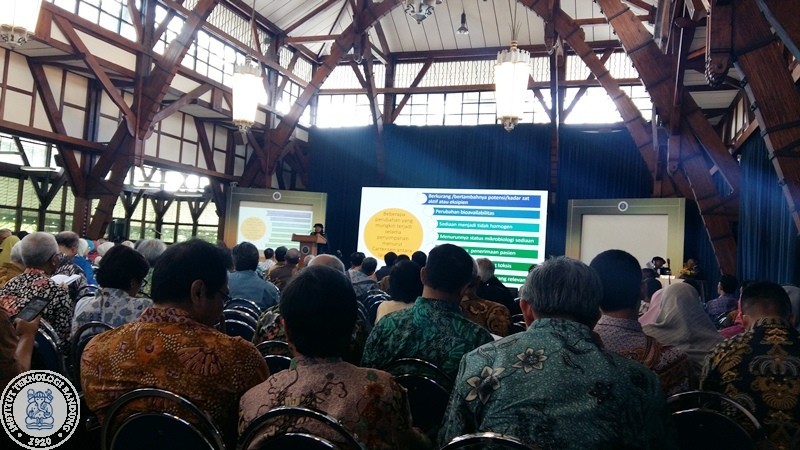Tannin Glue as Synthetical Glue Substituter in LVL Production
By Neli Syahida
Editor Neli Syahida

 BANDUNG, itb.ac.id - Composite wood manufacturer in Indonesia still use synthetic glue, like urea formaldehyde and phenol formaldehyde. Both of them will emit formaldehyde which harmful to human. Synthetic glue also require higher temperature in curing process. It will contribute to global warming. Moreover, raw material to make them are non-renewable resources. Therefore, Ir. Sutrisno, M.Si, a lecturer from Forestry Engineering ITB perform a research titled "Bark Tree Waste Processing as Tannin Glue and Eco Friendly Filler to Laminated Veneer Lumber Production from Community Forest Wood".
BANDUNG, itb.ac.id - Composite wood manufacturer in Indonesia still use synthetic glue, like urea formaldehyde and phenol formaldehyde. Both of them will emit formaldehyde which harmful to human. Synthetic glue also require higher temperature in curing process. It will contribute to global warming. Moreover, raw material to make them are non-renewable resources. Therefore, Ir. Sutrisno, M.Si, a lecturer from Forestry Engineering ITB perform a research titled "Bark Tree Waste Processing as Tannin Glue and Eco Friendly Filler to Laminated Veneer Lumber Production from Community Forest Wood". "From previous research, it was known that tannin can be used as eco friendly glue. But, it has not been applied in industry," Sutrisno said. Plants which contain high tannine content are acacia and mangrove. In his research, Sutrisno try to screen several trees which grow in community forest to measure tannin content and their adhesive properties. "There is a correlation between tannin content and adhesive force," Sutrisno said. Plants which are used in his research are sengon (Paraserianthes falcataria), jabon (Anthocepalus cadamba), gmelina (Gmelina arborea), afrika (Maesopsis eminii), manglietia (Manglieta glauca), mangium (Acacia mangium), and rubber tree (Hevea brasiliensis).
Tannin Extraction Process
To obtain tannin, bark is cut 2cm x 2 cm, then dried until water content is 15%. After dried, it is extracted with hot water 70 C. Its filtrate will contain tannin. The extract is used to embed two layer rubber wood in single extract or mixture of each other. Then, LVL is tested for delamination using JAS standard. The best delaminated test is obtained for mangium extract, then followed by mixture of mangium and rubber tree extract. "This result is equal to synthetic glue, urea formaldehyde which is commonly used in industry," Sutrisno said.
Bark Tree Waste Replace Wheat Flour Filler In manufacturing LVL, filler is commonly used to reduce the amount of glue. Industry use wheat flour as a filler. "Wheat flour is still has a value," Sutrisno said. Therefore, he tried to develop filler from gmeline bark tree waste and design it to nano-sized particle.
In manufacturing LVL, filler is commonly used to reduce the amount of glue. Industry use wheat flour as a filler. "Wheat flour is still has a value," Sutrisno said. Therefore, he tried to develop filler from gmeline bark tree waste and design it to nano-sized particle.
Filler is made by cut gmelina bark 2 cm x 2 cm, then dried until its water content is 5%. After dried, it is pounded and sifted with 20-40 mesh sieve. To make it in nano-size, powder is milled using conventional ball milling.
Nano filler is mixed to phenol formaldehyde with various composition to make three layer LVL from rubber tree. LVL then tested for delamination. The result is nano filler produced in all composition fulfill JAS standard.
Sutrisno explained that it's still initial research. From this research, it is expected to obtain the best composition of tannin glue, so that it can replace synthetical glue thoroughly. "We hope that eco friendly tannin glue can replace synthetical glue," he said. Moreover, he hope that one day this glue can be applied to home industry too.

.jpg)
.jpg)
.jpg)
.jpg)
.png)



